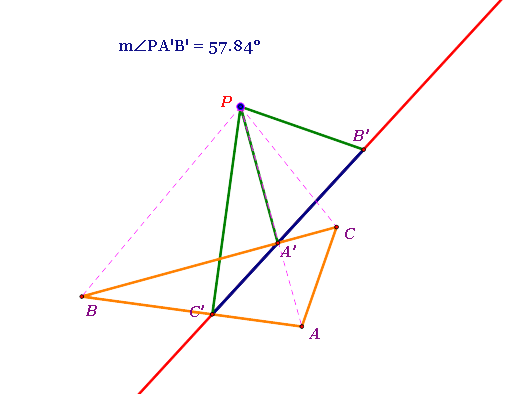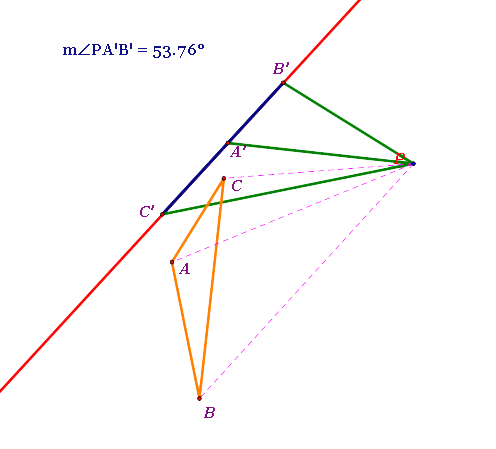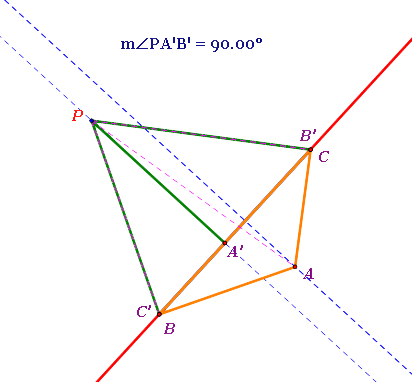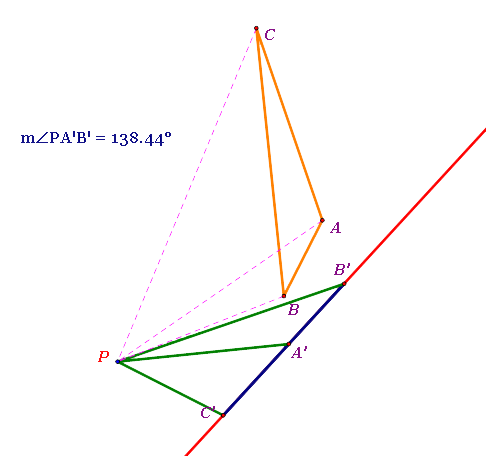|
Michelle E. Chung |
*
EMAT6680 Assignment 9: Pedal Triangles |
|
1c. Prove the pedal triangle of the pedal triangle of the pedal triangle of a point is similar to the original triangle.
That is, show that the pedal triangle A'B'C' of pedal triangle RST of the pedal triangle XYZ of pedal point P is similar to triangle ABC.
| Construction |
|
|
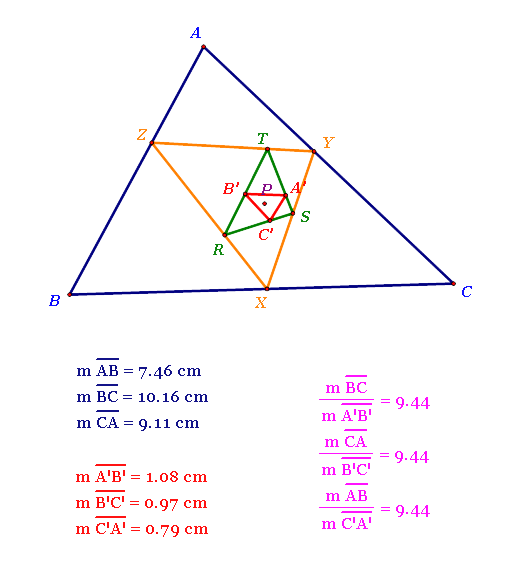 |
| Proof |
|
Look at the construction above.
It is kind of hard to prove this statement... so I used GSP.
Believe it or not, triangle ABC and triangle A'B'C' are similar since ratios of corresponding sides are congruent.
Also, line segments AB and C'A', line segments BC and A'B', and line segments CA and B'C' are corresponding sides respectively.
|
| |
Back to the Top |
9. Find all conditions in which the three vertices of the Pedal triangle are colinear (that is, it is a degenerate triangle).
This line segment is called the Simson Line.
|
| Construction |
|
|
Before putting vertices on the Simson Line
: Triangle ABC is the original triangle and triangle A'B'C' is the pedal triangle for pedal point P.
- As you see, P is inside of the original triangle. |
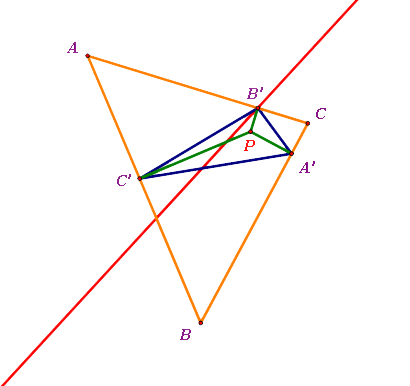 |
When three vertices on the Simson Line
:
If we move the vertices of the pedal triangle to the line, which is called the Simson Line,
the original triangle moves to the other side of the line and now P is outside of the original triangle.
|
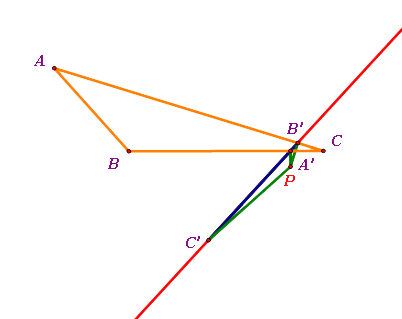 |
Back to the Top |
| Cases by Position |
When P is on the triangle
: If P is on the side of the original triangle, the original triangle would be very long shape, but it is still a triangle. |
 |
When P is outside of the triangle
- When the pedal point P is near by the Simson Line
-
The pedal point P and the original triangle ABC seem to be on the opposite sides of the Simson Line.
|
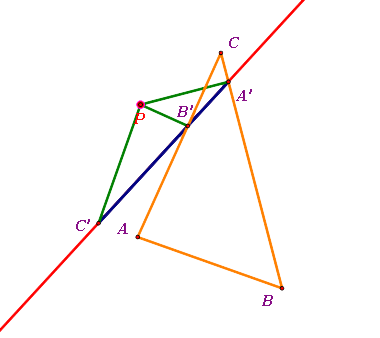 |
- When the pedal point P is farther from the Simson Line
- The pedal point P and the original triangle ABC seem to be on the same side of the Simson Line.
- The original triangle ABC seems to be apart from the Simson Line.
|
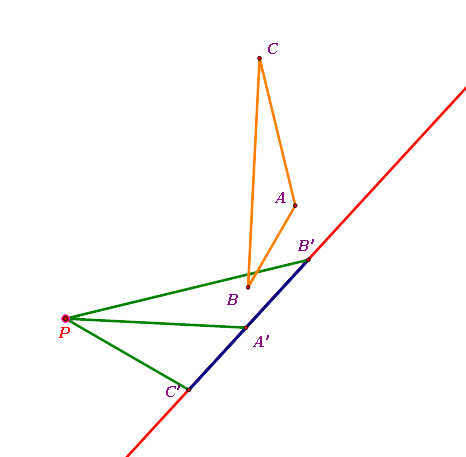 |
 |
Back to the Top |
| Cases by Angle |
|
| Conclusion |
From the observation, the position of the original triangle ABC seems to be determined by the angle PA'B', not by the position of the pedal point P.
- When m(angle PA'B') is an ACUTE angle, the original triangle ABC is on the LEFT side of the pedal point P and is on or apart from the Simson Line.
- When m(angle PA'B') is a RIGHT angle, the base of the original triangle ABC is on the Simson Line and the altitudes from the pedal point P and the vertex A are parallel.
- When m(angle PA'B') is an OBTUSE angle, the original triangle ABC is on the RIGHT side of the pedal point P and is on or apart from the Simson Line.
|
|
 Go Back to Top Go Back to Top |
 Go
Back to Michelle's Main page
Go
Back to Michelle's Main page |
 Go
Back to EMAT 6680 Homepage
Go
Back to EMAT 6680 Homepage |
Copyright
@ Michelle E. Chung |








